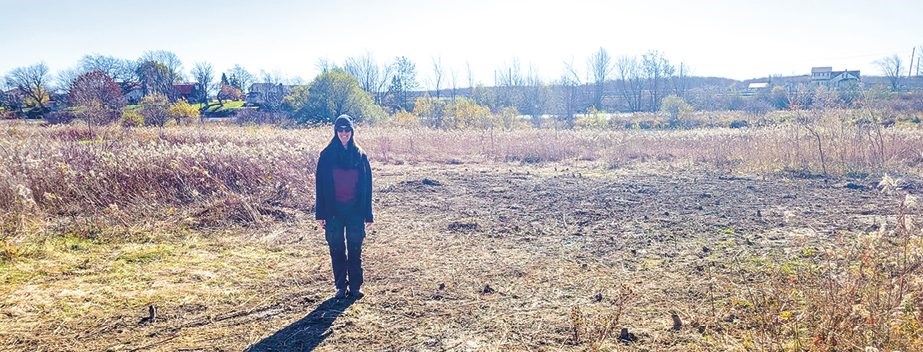European Black Alder threatened to take over E.C. Brown Wetland Park
“Invasive species are, next to development, the biggest threat to biodiversity in Canada,” says Kerry Royer, Community Outreach and Volunteer Coordinator for the Niagara Peninsula Conservation Authority (NPCA). She is standing in E.C. Brown Wetland Park, where three large pockets of European Black Alder have been cut back to within a few centimetres of the soil in an attempt to eradicate the aggressive invasive. Working closely with the Niagara College Ecosystem Restoration Program, the Conservation Authority is trying to preserve the character of the wetland floodplain meadow that is threatened by the fast-growing Black Alder. If left unchecked, it will take over the wetland, replacing native species with its dense shade and eliminating meadow habitat.

Adam Christie, Director of Conservation Areas for the NPCA, said that Niagara College students began the process of removing the Alders by mapping and cataloguing the population early this year.
“They attempted to remove some of the trees by hand… but many well-established trees are quite large and require professional removal,” said Christie.
Using a grant from the Invasive Species Centre and NPCA operation funds, the work to remove the trees, some as large as 15 centimetres (six inches) in diameter, was undertaken by a contractor with heavy equipment in late October. The stumps of the thousands of trees were painted by hand with the herbicide glyphosphate to prevent regrowth. The cut trees were removed from the site for disposal to reduce the impact on future growth in the meadow, and the abundant Black Alder seeds will be raked up and removed as well. The pockets of denuded soil will then be seeded with native wildflower and grasses in an attempt to restore the floodplain meadow. Fall was chosen for the removal and restoration as it is the most effective time to attack the Black Alder and ensures the trees are removed outside of migratory bird breeding season. Niagara College students will monitor the site in the spring to detect regrowth or new outbreaks of the invasive species and make recommendations for future control.
“E.C. Brown Wetland was always meant to be a cooperative project with Niagara College,” said Royer, herself a graduate of the Ecosystem Restoration Program. “It provides real world conditions for their studies and functions as a working lab while offering educational and recreational opportunities for the public.” The wetland park with interpretive signs along its walking trails is on River Road near the corner of Effingham.


